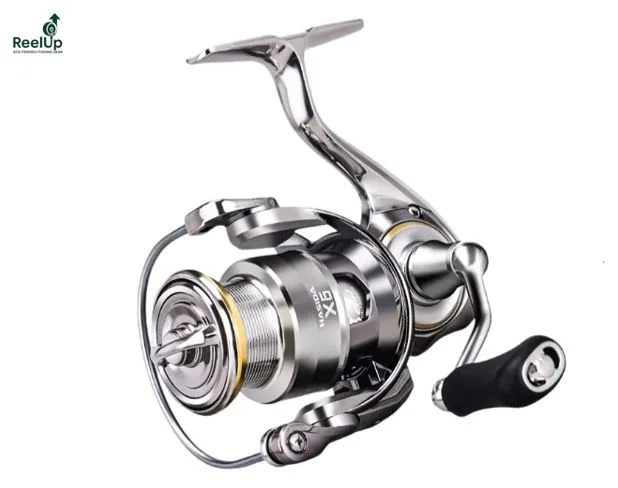What Makes a Truly Smooth Spinning Reel and How Beginners Can Choose the Right One
Introduction
Many new anglers quickly discover that their fishing experience is shaped not only by their rod and line but also by the spinning reel they use. A reel that turns smoothly, delivers clean line release, and offers steady drag control can make the difference between a relaxing day outdoors and a frustrating session filled with tangles and missed catches. Smooth operation is especially important for beginners because it gives them more control and confidence while they are still learning how to cast, retrieve, and handle fighting fish.
A spinning reel that operates without vibration or grinding reduces the physical effort required to cast repeatedly. This makes the process feel more natural and enjoyable. When the reel performs consistently, anglers can focus more on their technique and less on fighting their equipment. Smooth casting also results in better line flow, fewer loops, and improved lure action in the water.
Choosing the right reel is not always easy, especially for someone just starting to explore fishing. The market offers many models with different features, materials, bearings, spool designs, and promises of performance. Understanding what makes a reel truly smooth helps beginners make a thoughtful choice that supports good habits from the start and leads to more rewarding days on the water.
Understanding What “Smooth” Means in Spinning Reels
Smoothness in a spinning reel is often talked about, but many anglers may not know exactly what it means in practical terms. At its core, smoothness refers to how effortlessly the reel rotates when the handle is turned and how consistently it performs during casting and retrieval. When a reel feels silky, the internal components are working together efficiently, with minimal friction or mechanical resistance. A smooth reel allows the spool and bearings to move in harmony so that each rotation feels even and uninterrupted.
This quality becomes most noticeable when an angler is retrieving a lure. If the reel is not smooth, the handle may feel jerky, the retrieve may feel uneven, or the reel might make mechanical noise such as scraping or grinding. These issues become worse under pressure, such as when a fish is hooked and pulling against the drag system. When a reel is well designed, the motion remains consistent even when the load increases.
Smoothness also contributes to better lure presentation. Many lures are designed to work with steady movement, and a jerking or uneven retrieve can reduce their action in the water. Beginners benefit greatly from a stable retrieve because it gives them a clearer sense of how the lure is behaving and how fish respond. Smooth operation is not just a luxury feature but an essential part of comfort, precision, and fishing enjoyment.
Under this same idea, smoothness helps reduce fatigue over a day of fishing. When the reel turns effortlessly, less wrist and hand power are required to keep casting and retrieving. This is especially helpful for new anglers who may not yet have developed the muscle memory or technique to handle constant strain. A smooth reel allows the fishing experience to feel natural
How Drag Systems Influence Reel Smoothness
The drag system is one of the key components that determines how smoothly a spinning reel operates, especially during a fight with a fish. Drag controls the amount of pressure placed on the line when a fish pulls away, preventing breakage and giving the angler the ability to fight the fish gradually. A smooth drag system releases line evenly and consistently. A poor one may stutter or lock up unexpectedly, causing the line to snap or the hook to tear free.
Many spinning reels use either felt or metal drag washers. Felt washers are soft and can apply smooth pressure with minimal start up resistance, which is ideal for smaller fish or light line setups. Metal washers, often made of stainless steel or carbon fiber, offer more durability and can handle higher pressures. The type of washer used affects how consistently drag is applied. Regardless of material, the key is even heat distribution and stable movement during sudden pulls.
Some reels experience a problem known as start up inertia, where the drag hesitates before engaging, and then suddenly releases line. This jump in pressure can shock the line and cause lost fish. A well performing drag avoids this issue by maintaining steady resistance from the first moment of pull. This makes the fishing experience more controlled and predictable, which is helpful for beginners still learning how to manage a hooked fish.
One example of a reel designed for controlled drag performance can be found on ReelUp, a small brand based in Japan that focuses on quality fishing reels for everyday anglers. Their products are built with full metal bodies, smooth drag systems, and consistent engineering that provide steady operation without costing a fortune. Their approach centers on making reels that feel good in hand and hold up during frequent use, offering beginners access to dependable gear without overwhelming choices or price tags.
Role of Bearings in a ultra smooth spinning reel
Bearings are one of the most commonly discussed features in spinning reels, and they play a major role in how smoothly a reel turns. Each bearing acts as a support point for mechanical movement inside the reel. When bearings are well positioned and properly machined, they reduce friction, allowing the gears and spool to move freely. This gives the handle a satisfying, effortless motion that many anglers associate with premium performance.
However, the total number of bearings is not the only detail that matters. A reel with ten poor quality bearings may perform worse than one with five high quality ones. The material, sealing, and contact surfaces all influence how effectively the bearings contribute to smooth operation. Stainless steel bearings are commonly used because they resist corrosion and wear, especially when fishing near saltwater. Some high performance bearings are shielded or sealed to prevent dirt or sand from entering and affecting movement.
A smooth feeling retrieval comes from balance as well as bearing count. If the internal components are precise but the body or handle alignment is off, the reel may still feel uneven. For this reason, many well engineered reels combine good bearings with precise design and construction. The anchor term ultra smooth spinning reel is often associated with combinations of thoughtful engineering, bearing placement, and quality materials rather than just marketing claims.
In practical use, smooth bearings help reduce angler fatigue and create a more natural retrieve rhythm. A consistent handle turn helps beginners understand lure control and learn pressure sensitivity while reeling in a catch. When shopping for a reel, beginners can benefit from feeling several reels in hand to compare how easily they turn and whether the movement remains consistent when mild pressure is added. A well built reel should remain smooth even under a slight load.
Material and Build Quality That Support Smooth Performance
A spinning reel’s smooth performance depends not only on its bearings and drag system but also on its construction. The materials used in the frame, rotor, spool, and handle determine how well the components align and operate together. Lightweight metals such as aluminum are popular in reel bodies because they provide strength without excessive weight. A rigid body prevents flexing during a retrieve, helping the gears stay aligned while under pressure.
Machining accuracy plays a huge role in reel feel. If gears are cut with precision and housing surfaces are even, the internal system moves as intended without grinding, slipping, or rattling. CNC machining is often used to shape parts accurately so they interact smoothly. When reel components are not shaped or fitted well, anglers may notice uneven motion, vibration, or slight shaking when the reel is turned. This can be noticeable even before hooking a fish and becomes magnified under load.
The spool design also affects performance. A well machined shallow spool allows line to release smoothly and consistently, reducing friction during the cast. If the spool lip is rough or uneven, line can catch and disrupt casting motion. Beginners benefit from clean spool design because it helps reduce line twist and improves casting distance without needing advanced technique.
A sturdy screw in handle also contributes to a smooth feel by eliminating movement between the handle and body. When there is play in the handle connection, the retrieve may feel loose or imprecise. A reel with a solid handle attachment creates confidence during casting and retrieving, especially when a fish strikes. Strong build quality helps a spinning reel perform smoothly over time rather than just feeling good on the store shelf.
Benefits of a Smooth Reel for Beginners and Recreational Anglers
A smooth spinning reel can make a noticeable difference in both the learning process and the overall fishing experience, especially for beginners who are still getting comfortable with handling their gear. When a reel operates smoothly, everything from casting to landing a fish becomes more predictable, controlled, and enjoyable, helping new anglers build confidence without unnecessary frustration.
- Allows anglers to cast with better consistency, since a smooth retrieve helps develop a steady rhythm that translates into better distance and control over time
- Provides clearer feedback through the rod, making it easier to understand how the lure is moving underwater and whether any fish are making contact or nibbling
- Reduces strain on the wrists, arms, and hands during long fishing sessions, which helps beginners stay comfortable and stay on the water longer without feeling worn out
- Offers more controlled line release when fighting a fish, helping to prevent sudden jerks, line breakage, or hooks pulling free during the struggle
- Maintains consistent performance under pressure, especially when the drag system engages smoothly instead of sticking or hesitating and then releasing force suddenly
- Helps beginners stay focused on learning technique rather than dealing with mechanical resistance or uneven movement that makes fishing feel more complicated than it needs to be
- Creates a more enjoyable overall experience, since smoother operation means fewer surprises and more predictable handling during casting, retrieving, and fighting fish
For many beginners, using smooth and dependable equipment allows learning to feel natural and confidence to grow with each session. ReelUp, a small Japan based brand creating practical reels for everyday anglers, focuses on full metal construction, stable drag systems, and consistent performance that avoid the problems many affordable reels suffer from. Their approach gives new and recreational anglers access to gear that feels good in hand, holds up during frequent fishing trips, and delivers solid performance without needing high cost premium setups.
Common Mistakes to Avoid When Choosing a Smooth Spinning Reel
Many new anglers approach reel shopping with enthusiasm but often fall into predictable traps that make their first purchase less enjoyable than it could be. A little awareness goes a long way, and understanding the most frequent mistakes can help beginners choose a reel that performs well both on the first cast and after months of regular fishing.
- Focusing only on bearing count instead of the quality of the bearings, since high numbers can look impressive but may still lead to poor performance if the parts are cheaply made or poorly positioned
- Assuming more bearings always mean a smoother reel, when even a model with fewer but better bearings may rotate with much more precision and consistency
- Ignoring the importance of the drag system, even though a smooth, stable drag is essential for preventing sudden line breaks or lost fish when a catch makes a quick run
- Buying without physically testing the drag by pulling line from the spool to check whether it releases pressure in a smooth and even way without sticking or jumping
- Overlooking the construction materials of the reel body, since plastic or poorly reinforced frames can flex under pressure and cause the gears to shift slightly out of alignment
- Choosing reels that look heavy and strong without noticing that too much weight can cause arm fatigue, making long sessions uncomfortable and harder to enjoy
- Failing to consider how well the reel balances on the rod, since even a good reel feels unpleasant if matched with a rod that makes the setup feel tip heavy or awkward
- Buying based on appearance or marketing features rather than evaluating the real mechanical performance that determines long term smoothness during actual fishing use
With a bit of understanding, new anglers can avoid these common pitfalls and feel more confident when choosing their equipment. The key is to focus on balance, quality of construction, and real world performance rather than flashy specifications that might look appealing online. Learning these fundamentals early ensures that the first reel feels satisfying on the water, performs reliably in different conditions, and gives beginners a solid foundation for developing their technique.
Maintenance Practices to Keep a Reel Running Smoothly
A spinning reel lasts longer and performs better when it is cared for regularly. Anglers often fish in environments that expose their gear to water, dirt, and salt, making consistent upkeep important.
- Wipe the reel with a soft cloth after each fishing trip to remove dirt and moisture
- Give saltwater reels a gentle rinse to prevent salt crystals from damaging metal parts
- Use small drops of oil on bearings and handle joints to reduce friction
- Apply grease lightly inside gears to protect them from wear
- Avoid using too much lubricant since excess can collect dirt
- Store the reel in a clean and dry place to prevent corrosion
- Use a reel cover or ventilated tackle box for additional protection
- Perform light maintenance every few trips and a deeper service once or twice a year
By keeping up with small care tasks, reels continue to run smoothly and maintain performance without frequent replacement. This approach helps new and experienced anglers get more life and reliability from their equipment.
Final Section
Choosing a spinning reel that operates smoothly can greatly improve the fishing experience for new and recreational anglers. A well balanced reel provides consistent drag, clean line release, and effortless retrieval, all of which help beginners build confidence in their technique. Instead of fighting with equipment that sticks or vibrates, anglers can focus on casting accuracy, lure action, and learning how fish behave beneath the surface.
A reliable reel should feel comfortable in hand and offer predictable performance whether used on a quick evening trip or during a long weekend outing. For those looking for dependable options, ReelUp is a small Japanese based team dedicated to building honest, hard working reels for everyday anglers. Their products are designed in Japan and manufactured directly through their own production partners, ensuring consistent quality, smooth drag systems, solid metal construction, and options that come ready to fish right out of the box. By supplying reels factory directly, they offer affordable gear that performs well without unnecessary markups.
Good equipment does not have to be complicated or expensive. What matters most is that it matches the angler’s needs, feels good in use, and remains reliable through regular trips. With thoughtful selection and simple maintenance, beginners can enjoy smoother casts, easier retrieves, and a more comfortable introduction to fishing. This creates a foundation for long term enjoyment and helps new anglers feel at home every time they step near the water.






